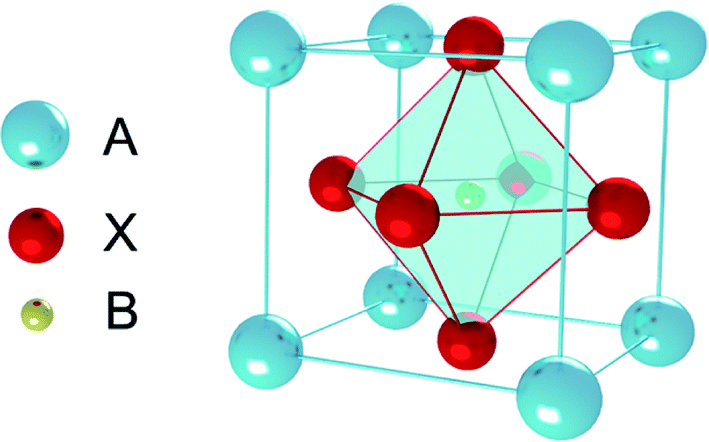A Case for Perovskite Solar Cells
by Urja Zaveri
In recent years, increasing scientific interest has been given to the perovskite structure. Perovskites can be used in wide applications, from catalysis and fuel cells to electrochemical sensing and high-temperature superconductivity. However, its most important application remains in its usage in solar cells.
Perovskite is a mineral with the chemical formula CaSiO3 and was first found in the Ural Mountains. The [(Fe,Mg)] perovskite called bridgmanite is Earth’s most abundant mineral (Tschauner, 2014). It only exists in the lower part of Earth's mantle, at a depth between around 660 and 2,600 km. This mineral lends its name to a class of compounds which have the same crystal structure, known as a “perovskite structure”. Crystals with a perovskite structure are interesting because their properties range from being insulators to semiconductors, to high-temperature superconductors.
Perovskites have a generalised formula ABX3. They consist of cubes made of three chemical elements A, B, and X in the ratio of 1:1:3, respectively. Many elements can combine to form hundreds of ideal or modified perovskites. Ideal perovskites have filled atomic sites; hence the elements are held tightly in their place. Therefore, free electrons have difficulty moving through the crystal, making these crystals insulating in nature.
Image credit: Chen et al., 2018
It is when this ideal structure does not hold up due to impurities or crystal defects, that we get modified crystal properties. And it is these properties that spike the interest of researchers.
Perovskite cells are synthesised easily by the deposition of chemicals by spraying, spin-coating, or painting them onto a substrate. Solar cells with perovskite as the active component are not only cheaper than ones with silicon but can be made with very high power conversion efficiencies for turning the sun’s rays into electrical energy. Additionally, perovskite solar cells are thin and lightweight, making them ideal for use in portable and flexible applications. Hence, they produce a clean and renewable source of energy that does not rely on fossil fuels or other harmful sources.
As with any other technology, some challenges exist before perovskite can become the undefeated champion of solar cells. Perovskite solar cells are known to have stability issues due to their sensitivity to moisture, heat, and light. When exposed to these environmental factors, the crystal structure of perovskite can degrade, leading to a decrease in efficiency and a shorter lifespan for the solar cell.
Another issue with stability is the lead content in perovskite. Lead is a toxic substance and the presence of it in perovskite cells raises concerns about their environmental impact and safety for human use. Researchers are working on developing lead-free perovskite alternatives, but this is an ongoing challenge.
Lastly, there exists the issue of commercialisation due to perovskite solar cells’ short operational lifetimes. Currently, they are made on a small scale in laboratory settings, and there is still a long way to go before they can be produced on a large scale and at a low cost.
At present, several pilot-scale production lines have been initiated and companies are scaling up the production of perovskite panels using diverse technologies. As an illustration, Oxford PV, a UK-based company, has recently announced the completion of its 100 MW manufacturing site in Germany, and is progressing well to commence full production in the upcoming two years.
Perovskite solar cells have the potential to be a game-changer in the field of solar energy due to their low cost and high efficiency. However, their stability issues and environmental impact need to be addressed before they can be widely adopted. Nonetheless, ongoing research and development efforts are underway to overcome these challenges, and the progress in scaling up production provides a reason for optimism about the future of perovskite solar cells. And hence, while it may take some time for research and development progression to solve these issues, perovskite’s future looks quite optimistic to me.
References:
Chen, Y., Zhang, L., Zhang, Y., Gao, H., & Yan, H. (2018). Large-area perovskite solar cells–a review of recent progress and issues. RSC advances, 8(19), 10489-10508.
Hazen, R. M. (1988). Perovskites. Scientific American, 258(6), 74-81.
Tschauner O, Ma C, Beckett JR, Prescher C, Prakapenka VB, Rossman GR. Mineralogy. Discovery of bridgmanite, the most abundant mineral in Earth, in a shocked meteorite. Science. 2014 Nov 28;346(6213):1100-2. doi: 10.1126/science.1259369. PMID: 25430766.

